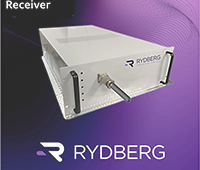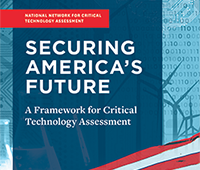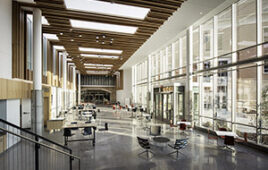Researchers at the Georgia Institute of Technology discovered a new way to improve human and robot safety in manufacturing scenarios by developing a method for robots to project their next action into the 3-D world and onto any moving object.
“We can now use any item in our world as the ‘display screen’ instead of a projection screen or monitor,” says Heni Ben Amor, research scientist in Georgia Tech’s School of Interactive Computing. “The robot’s intention is projected onto something in the 3-D world, and its intended action continues to follow the object wherever that moves as long as necessary.”
The discovery, born from two algorithms and a spare car door, is ideal for manufacturing scenarios in which both humans and robots assemble together. Instead of controlling the robot with a tablet or from a distant computer monitor, the human worker can safely stand at the robot’s side to inspect precision, quickly make adjustments to its work, or move out of the way as the robot and human take turns assembling an object. Knowing exactly where and what task a robot will do next can help workers avoid injury.
“The goal of this research was to get information out of the virtual space inside the computer and into the real physical space that we inhabit,” Ben Amor adds. “As a result of that, we can increase safety and lead to an intuitive interaction between humans and robots.”
The discovery was developed over a four-month period by Ben Amor and Rasmus Andersen, a visiting Ph.D. student from Aalborg Univ. in Denmark. The team realized that, by combining existing research available at Georgia Tech’s Institute for Robotics & Intelligent Machines (IRIM) with new algorithms, plus personal experience with auto manufacturers, they could make “intention projection” possible.
They first perfected algorithms that would allow a robot to detect and track 3D objects, beginning with previous research from Georgia Tech and Aalborg University that was further developed. They next developed a second set of entirely new algorithms that can display information onto a 3-D object in a geometrically correct way. Tying these two pieces together allows a robot to perceive an object, then identify where on that object to project information and act, then continuously project that information as the object moves, rotates or adapts. Andersen led the coding.
Source: Georgia Institute of Technology
• CONFERENCE AGENDA ANNOUNCED:
The highly-anticipated educational tracks for the 2015 R&D 100 Awards & Technology Conference feature 28 sessions, plus keynote speakers Dean Kamen and Oak Ridge National Laboratory Director Thom Mason. Learn more.




